Log Cabin Tools: 7 Essential Tools to Build a Log Cabin
Before you start building your log cabin, you need to make sure you have the right tools for the job. The tools you choose will depend on several factors, such as the type and size of your log cabin, the style and design of your notches, and whether you want to use power tools or hand tools.
In this section, we will introduce 7 log cabin tools main tools that are required for building a log cabin and explain how each tool works and what it is used for. We will also provide some tips on how to choose and use the tools safely and effectively.
Axes
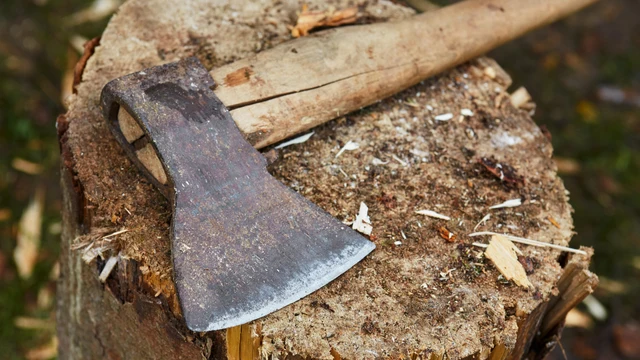
If you’re a traditional log cabin builder, then you understand the importance of having quality tools that can withstand the rigors of felling, harvesting, and preparing logs.
One tool that has been used for centuries in the timber industry is the ax (or axe). Dating back to the stone age, the hand ax was the first tool used for felling trees and preparing lumber.
Today, axes come in various shapes and sizes, and they have been improved with modern technology to enhance precision and speed. However, some builders still prefer the use of traditional tools like the adze or the hand ax for notching and shaping logs.
When using an ax for felling trees, a v-notch or kerf is often used to guide the tree’s fall. To ensure safety, it’s essential to make sure the waist height of the ax handle is appropriate for the user’s size, and the blade is no larger than 12″ in diameter.
Brands such as Helko Werk and Hults Bruk have been making quality axes for generations, but a chainsaw can also be used as a substitute tool. Ultimately, whether you use an ax or a chainsaw, having the right tools for the job is essential for successful log cabin building.
Chainsaws
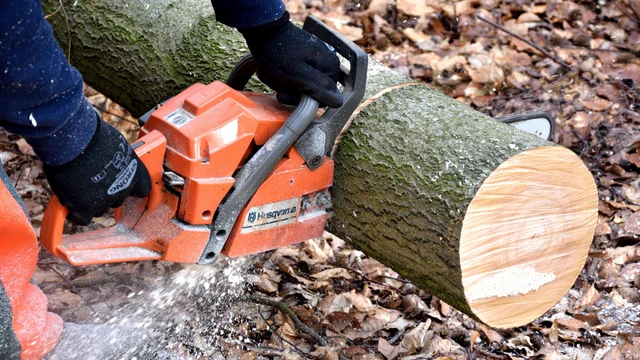
When it comes to building a log cabin from scratch, taking the cheap route may seem like a good idea at first, but investing in good quality log cabin tools can make your life much easier in the long run.
One of the most important tools you’ll need is a chainsaw, as it’s a universal tool that can be used for cutting logs to length, shaping logs, making notches, carving details, etc..
To ensure precision and accuracy, using log dogs and hand power tools alongside a chainsaw is recommended. When it comes to selecting a chainsaw, it’s important to choose one with an 18″ bar length or longer.
Two popular brands known for their quality chainsaws are Husqvarna and Makita. Investing in the right tools may come at a higher cost initially, but it’s a small price to pay for a well-built log cabin that will last a lifetime.
Drawknives
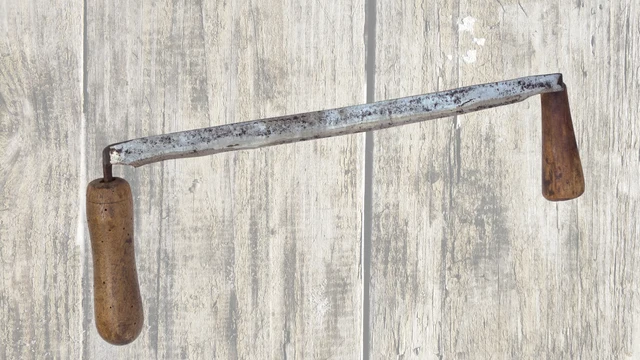
Also known as a drawing knife or drawshave, this tool is designed for peeling and debarking logs, as well as shaping lumber for all sorts of woodworking projects.
With its chisel-shaped blade and tapering tangs, a drawknife provides excellent control and precision, allowing you to easily remove excess wood and bark from your logs.
This makes it an essential tool for anyone interested in building log cabins or working with larger pieces of wood.
Using a drawknife properly involves straddling the log and carefully following the grain, so as not to damage the wood.
When felled in the spring, trees are at their most flexible, making them ideal for using a drawknife to shape them into the desired form.
For those looking to debark logs or tackle tacky bark, a drawknife is an excellent alternative to the more specialized debarking spud. With its cutting blade and comfortable wooden handles, a drawknife is a must-have in any woodworker’s tool collection.
Log Dogs
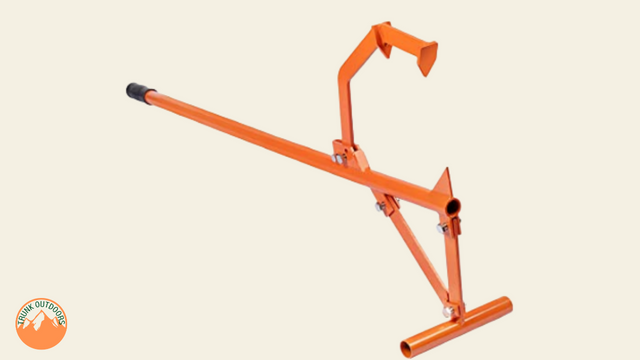
Log dogs are heavy-duty iron tools designed to hold logs in a fixed position while you work on them. They are especially useful for notching and scribing, two key techniques in log cabin building.
They come in a range of sizes, from small sizes for thinner logs to large sizes for thicker ones. They are an alternative tool to log cleats, but many builders prefer them for their superior hold and stability.
Log dogs are also tapered, which helps keep the logs from slipping or shifting during construction.
Whether you’re a seasoned builder or just starting out, investing in quality log cabin tools like log dogs can make all the difference in the success of your project.
Mallets
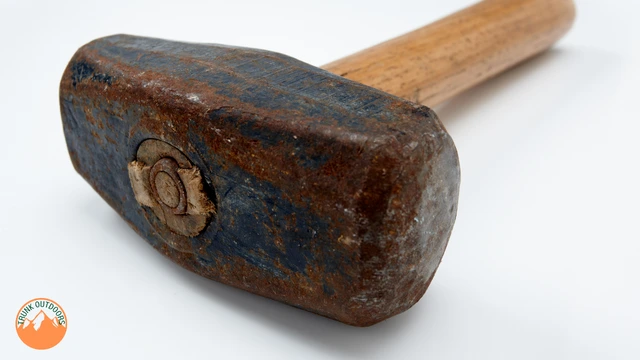
One of the essential tools you’ll need on building a log cabin is a mallet, and not just any mallet will do. You need a quality mallet that can withstand the rigors of log cabin building.
One option to consider is a white rubber mallet. These mallets are made from high-quality rubber that won’t damage the wood and won’t leave marks on the surface. They’re perfect for assembling logs and other woodworking tasks.
Another option to consider is a wooden mallet. Wooden mallets are great for working with timber, logs, and other woodworking tasks. They come in a variety of sizes and are often used with adzes, chisels, and log dogs.
If you’re interested in the history of log cabin building, consider visiting a museum that showcases the tools and techniques used by early settlers. You may be surprised to learn how much they relied on tools like the mallet, hammer, and sledgehammer to build their homes and homesteads.
With the right tools and a little bit of know-how, you too can build a beautiful log cabin that will last for generations. Check out this article to learn more about What is a Hunting Cabin?
Peaveys
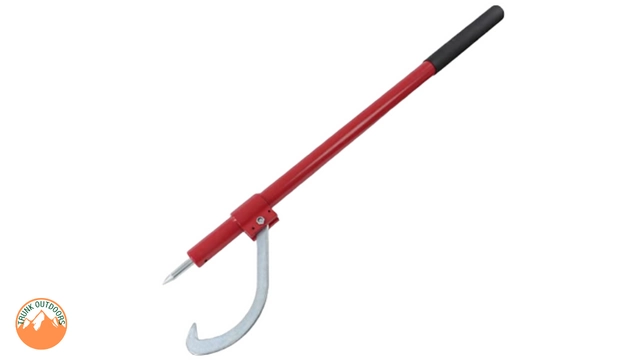
The Peavey is a logging tool that is designed to help you move, position, and roll felled logs with ease. It’s an indispensable tool for any log cabin builder who wants to make short work of uneven logs and reposition them quickly and efficiently.
The Peavey is a heavy-duty tool that features a spike, hook, and arm that work together to provide maximum leverage when repositioning logs.
With the Peavey, you can move even the heaviest logs with ease, making it a must-have tool for anyone in the log cabin building industry.
Not only is it an effective tool, but it’s also a durable one. The Peavey is built to last, ensuring that you’ll get years of use out of it.
While the Peavey is an expensive tool, its strength and durability make it a wise investment for any log cabin builder. However, if you’re looking for a more affordable alternative, a heavy-duty flat pry bar may be a suitable substitute.
Regardless of which tool you choose, having the right tools at your disposal will make all the difference when it comes to building a log cabin. So, if you’re serious about log cabin building, be sure to add the Peavey to your toolkit.
Adze
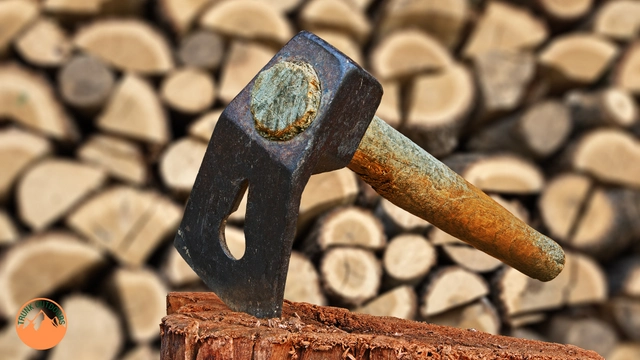
An adze is an ancient cutting tool that consists of a flat blade set at a right angle to a wooden shaft. With a weight of about 3lbs, it’s a low hewing tool that is perfect for felling, hewing, and smoothing logs, as well as debarking and peeling trees.
Its unique design allows for a perpendicular swing, making it ideal for cutting across the grain of the wood, unlike an ax.
The handle of an adze is typically longer than that of a gardening hoe, providing a better grip and greater control over the cutting blade.
Some adzes come with a top side that’s flat, while others have a curved shape that allows for finer detail smoothing.
If you’re looking for a long-handled adze, you might want to consider a broad axe, which is similar but has a wider blade.
Overall, an adze is a useful and versatile tool that is sure to come in handy for any woodworking or gardening project that requires precision cutting.
Related: Common Log Cabin Maintenance Tips
FAQs
What are logging tools?
Logging tools are any tools or equipment that are used for cutting, moving, processing logs or monitoring tools. Logging tools can be classified into different categories depending on their function and purpose.
How do you carry a heavy log?
There are different ways to carry a heavy log depending on the distance, terrain, and equipment available. Some of the common methods are:
1. Rolling: This is the simplest way to move a log if it is round and straight. You can use a rockbar or a peavey to roll the log along the ground.
2. Dragging: This is a way to move a log by pulling it along the ground. You can use a chain, a rope, or a hookaroon to attach to the log and drag it with your own strength or with a vehicle.
3.Lifting: This is a way to move a log by raising it off the ground. You can use log tongs, a timberjack, or a log arch to lift one or both ends of the log and carry it by hand or with a vehicle.
Is rolling a log easier than dragging it?
Rolling a log is easier than dragging it because rolling friction is usually much lower than sliding friction.
Conclusion
Building a log cabin can be a rewarding and challenging project that requires the right tools and skills. Whether you are a modern or a traditional log cabin builder, you need to know how to cut, move, and process logs efficiently and safely.
In this article, we have covered some of the essential log cabin tools that you should have in your arsenal, such as chainsaws, adzes, Peaveys, axe, mallets, Log dogs and Drawknives. With these tools, you can turn your dream of living in a cozy and rustic log cabin into reality.